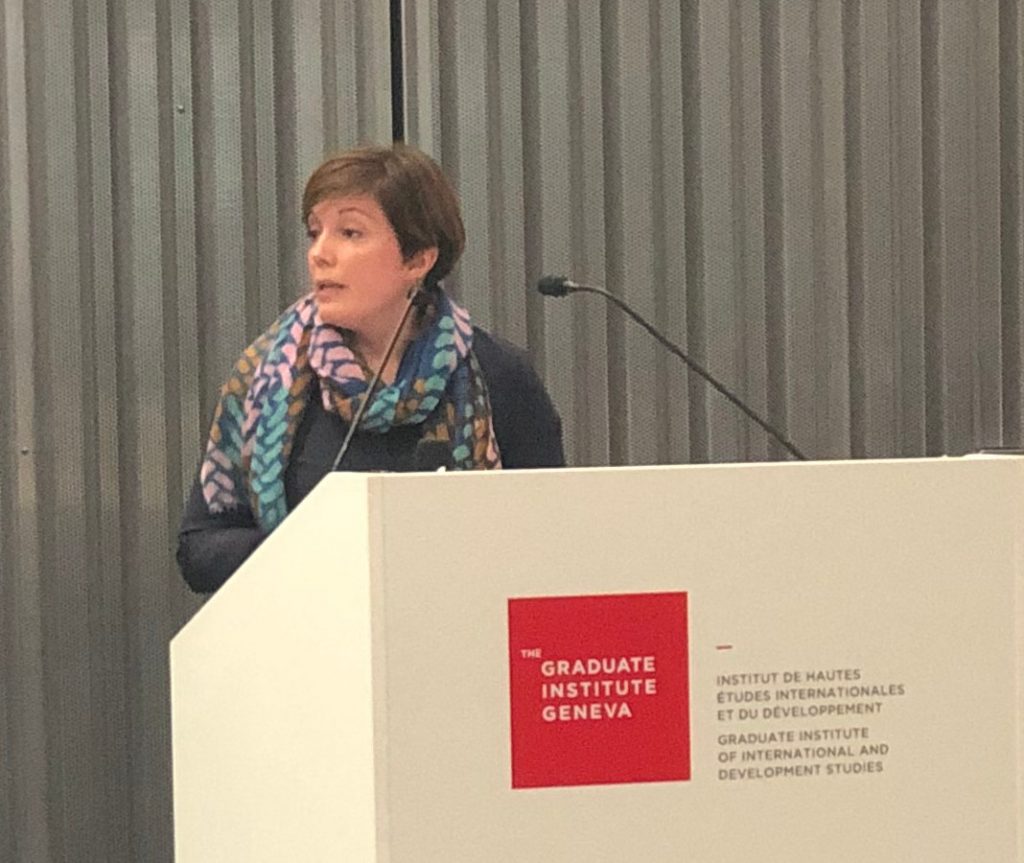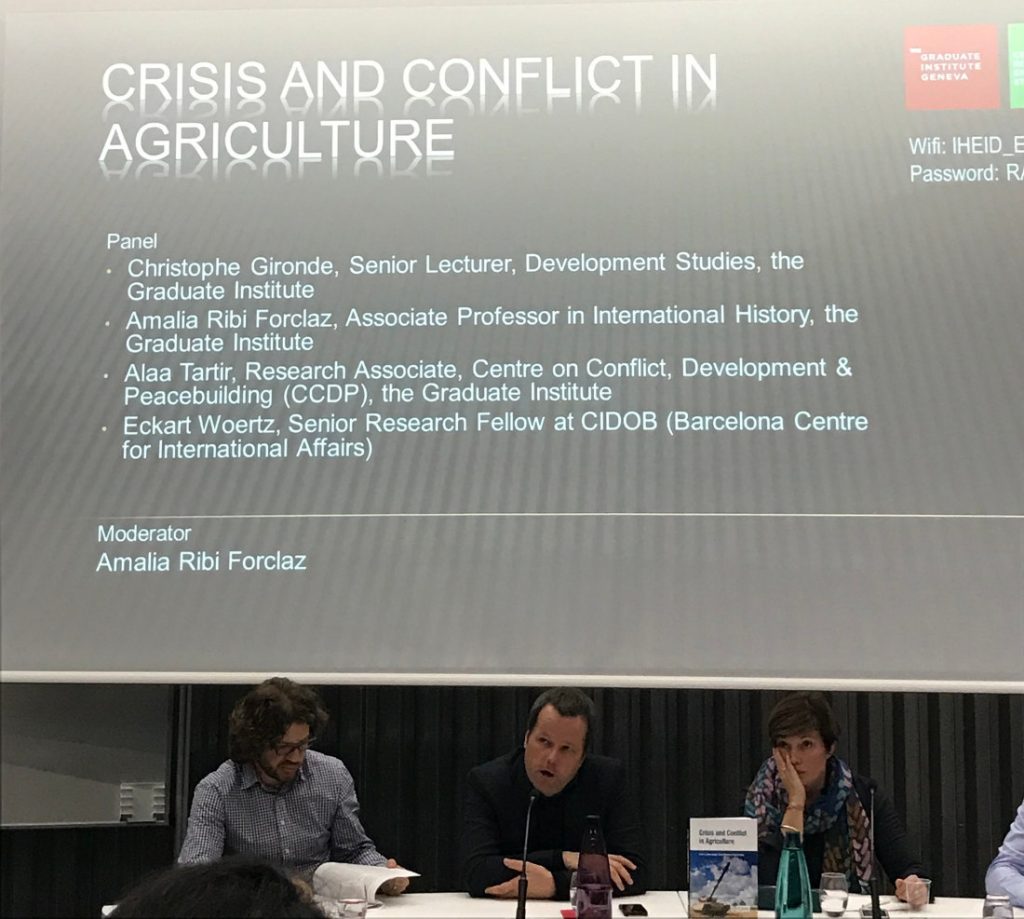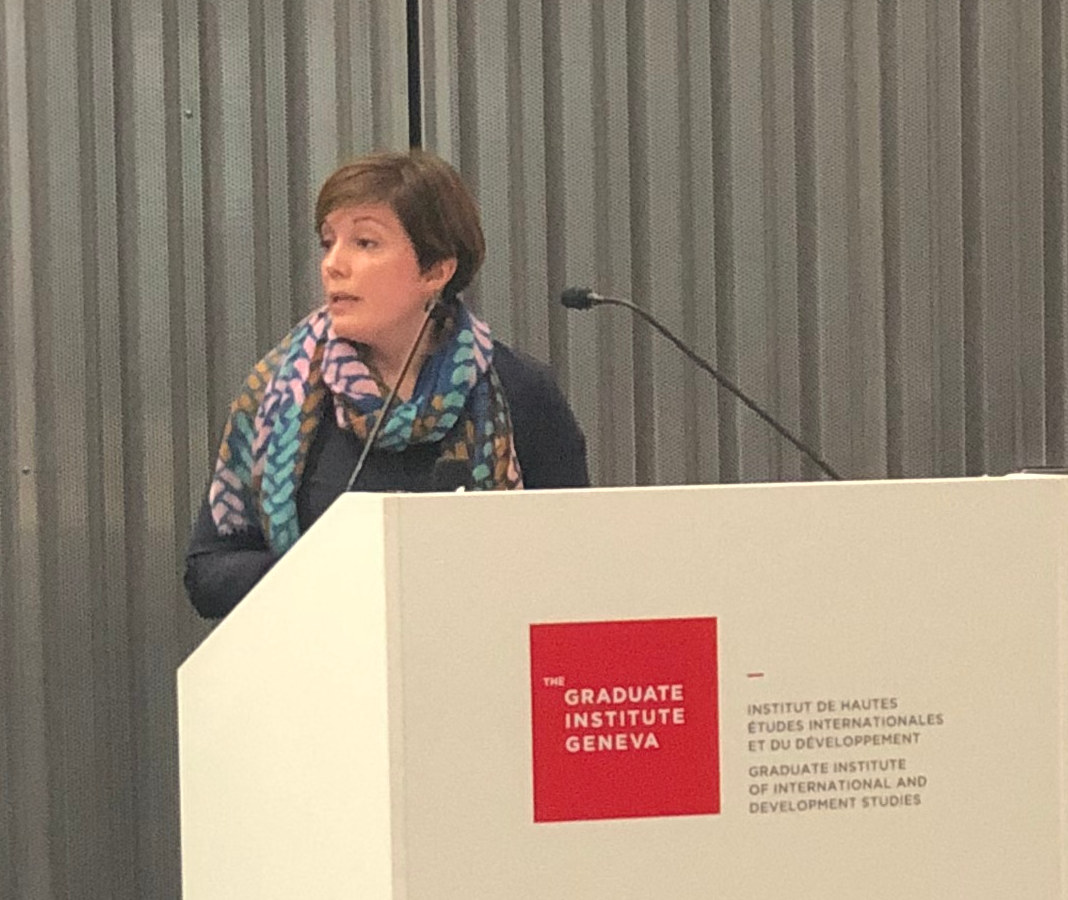GENEVA, Switzerland (ViaNews) – Conflict takes on many shapes. In our current global situation, we are seeing more crisis and conflict sprouting. As the media, academia, and NGOs, we mostly focus on the human dimensions of conflict – the loss of lives, the violence, and the politics – and the agricultural dimensions often go ignored. To fill this gap, top academics have released a book entitled “Crisis and Conflict in Agriculture”, which provides a heretofore unseen global perspective into the agricultural and resource-driven causes of modern conflicts.
“The environment is not an external variable, rather it is quintessentially human.”
Prof. Eckart Woertz
Increasingly relevant since the 2008 food crisis, and more recently with food security issues being blamed for ongoing conflicts in places such as Yemen, “the book looks at the relationship between food and war, or food and peace,” stated Professor Amalia Ribi Forclaz at the book launch at the Graduate Institute in Geneva.

Published by CABI and compiled at the University of Beirut, “Crisis and Conflict in Agriculture” features a number of contributors from a wide spectrum of academia’s brilliant minds, and explores the relationship between agriculture and conflicts and crises before, during, and after crisis periods. From Latin America to Southern Punjab, Cambodia, Palestine, and Sub-Saharan Africa, the 14 case studies presented analyse not only how conflict and crisis affect agriculture, but also how agricultural and rural issues contribute to conflict and crisis.
Via News attended the book launch and spoke to some of the academic contributors. Case studies pertaining to Palestine by author Alaa Tartir and Cambodia and Vietnam presented by expert academic contributor Christophe Gironde were very formative.
The Palestine Case Study
In Palestine, the agricultural dimension of conflict has been present since the first occupation. “The relevance of agriculture in the case of Palestine is huge, as it is widely perceived as being the backbone of Palestine, and is an inherently political act. To farm Palestine is to farm for freedom,” explained Alaa Tartir.
“To farm Palestine is to farm for freedom”
Alaa Tartir
The Palestinian population has seen farming as an act of resistance to Israeli occupation, with land-grabs and ownership of land lying at the heart of the Israel-Palestine conflict. Since 1967, 2.5 million fruit trees have been uprooted, including 800,000 olive trees at an annual cost of $64 million.
“The occupation also means that Palestine has been shrinking and fragmented in land mass, which is a huge problem for agriculture in the region. The securitization of the land by Israeli forces is also another issue. The estimated economic costs of occupation (lost potential output) for 2010 was $6.9 billion, or about 85% of the GDP,” continued Tartir.

As it stands, agricultural development is only receiving 1% of the $35 billion in aid funds for the region. When asked about how the humanitarian response could be improved to specifically meet the needs of rural populations, Alaa Tartir gave the insight that “Humanitarianism is not forward-thinking: it just looks at filling the gaps, and Israel is a master at creating these gaps. This then becomes the status quo. So the current package of aid isn’t a very good solution.”
Cambodia & Vietnam
In the cases of Cambodia and Vietnam, Professor Christophe Gironde asked the question of why has a population so accustomed to revolt and revolution in the past not protested more against their current situation with regards to agriculture.
“Land grabs and concessions are creating huge land fragmentation problems, as well as peasant populations suffering against increased capitalism, urbanisation and government interference, building dams and so on,” said Professor Gironde.
However, despite many in rural areas losing their means of livelihood, and the subsequent exodus of farmers from the agricultural industry, the populations, by and large, have a positive attitude. ‘They are living an overall better quality of life. There have been no records of large-scale famine, only pockets of famine in indigenous communities, and there is relative rather than absolute poverty,” Gironde went on to explain. “This, coupled with a change in norms and values, coupled with the idea that “Everybody can succeed!”, as well as the fraying of communities means that traditional leaders have lost some of their legitimacy and prestige when it comes to resolving land-grabbing issues.”
In the case of Cambodia specifically, population-state power relations are skewed, with the Hun Sen regime cracking down tightly, and creating a legal framework that has legitimized land grabbing and other powers of the state on the land. Not only that, but according to Gironde, “Civil society has been destroyed, and NGOs have supported government policies.”
When asked about how the humanitarian response could be improved, Professor Gironde elaborated that “The drama has not come yet, and the current model is that farmers are relying on credit, so the drama may come. There is a debt crisis, with very high interest.”
“The pace of change is happening too rapidly and brutally. The land grabs are too quick, and some have called for a ban on the quick land grabs. The NGO’s are not giving good advice. For example, farming some cash crops is ok, but not changing everything overnight. So time is a huge issue, as well as the unsustainability of farming and financial practices.”
Conflict Footprint for Consumers
A possible solution offered by moderator Professor Amalia Ribi Forclaz looked at how we as consumers can impact change. “Responsible consumerism is very important. We should consider a “conflict footprint” alongside our carbon footprints when making consumer decisions.”
Another recommendation made was for NGOs to reflect on how to promote sustainable, local agriculture when engaging in best practices. With rural populations being consistently more at risk throughout recorded history, shining the spotlight on them when looking at development plans, and taking into account the specifics of each different case could greatly aid in supporting these increasingly vulnerable populations from future crisis and conflict.




